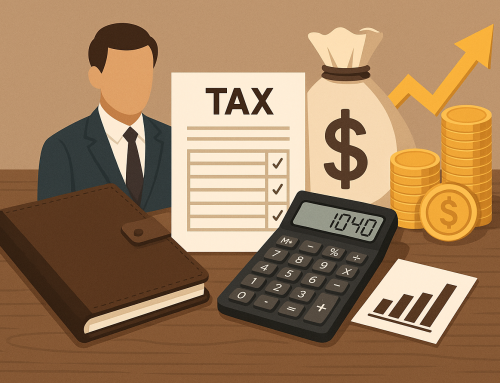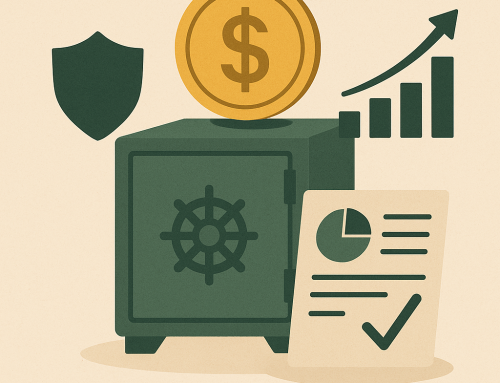
By Atfinance
Introduction
Retirement is not just an end—it’s a transition into a new phase of life. Whether you dream of traveling the world, spending more time with family, or simply enjoying peace of mind without financial stress, financial planning for retirement is the cornerstone of achieving that goal.
In previous articles, we explored the retirement system in Quebec and the basics of how to plan for retirement. This comprehensive guide takes it a step further, helping you understand how to build a robust financial plan, avoid common mistakes, and create the retirement you deserve.
Why Financial Planning for Retirement Is More Important Than Ever
With increased life expectancy, rising healthcare costs, and uncertain economic environments, relying solely on public pensions like the Quebec Pension Plan (QPP) or Old Age Security (OAS) is no longer enough.
Here’s why planning ahead matters:
- You may spend 25–30 years in retirement.
- Inflation erodes purchasing power over time.
- CPP/QPP and OAS cover only about 40% of pre-retirement income.
- Medical and long-term care costs can be unpredictable.
A proper financial plan ensures you won’t outlive your savings and will maintain your quality of life, no matter what.
Step 1: Define Your Retirement Vision
Before crunching numbers, ask yourself:
- When do I want to retire?
- Where will I live?
- What lifestyle do I want—travel, hobbies, volunteering?
- Will I continue to work part-time or consult?
- Do I want to leave an inheritance or donate to charity?
Your vision defines your financial needs.
Step 2: Estimate Your Retirement Expenses
Retirement doesn’t mean fewer expenses—it means different expenses.
Fixed expenses:
- Housing (rent, property tax, condo fees)
- Utilities and insurance
- Basic groceries
- Health insurance
Variable expenses:
- Travel and leisure
- Home renovations
- Support for children or grandchildren
- Charitable giving
A good rule of thumb: aim to replace 70–80% of your pre-retirement income to maintain your lifestyle.
Step 3: Assess Your Income Sources
Your retirement income may come from:
✅ Public pensions
- QPP/CPP: Based on your work history and contributions.
- OAS: Based on residency, not work.
- GIS: Additional support for low-income retirees.
✅ Workplace pensions
- Defined benefit (DB) plans: Guarantee a fixed monthly income.
- Defined contribution (DC) plans: Depends on market returns.
✅ Personal savings
- RRSPs/RRIFs
- TFSAs
- Real estate
- Investments (stocks, ETFs, bonds)
✅ Other sources
- Part-time work
- Business income
- Inheritance
Creating a timeline for when each income source kicks in is key to avoiding cash shortfalls.
Step 4: Identify the Gap
Compare your projected expenses with your projected income.
If there’s a shortfall, consider:
- Saving more now
- Working longer or part-time in retirement
- Downsizing your home
- Adjusting your retirement age or lifestyle
Use tools like retirement income calculators or meet with a financial planner to get clarity.
Step 5: Optimize Your Savings Strategy
Your savings vehicles should be tax-efficient, diversified, and flexible.
RRSPs (Registered Retirement Savings Plans)
- Tax-deferred growth
- Tax-deductible contributions
- Must be converted to RRIF by age 71
TFSAs (Tax-Free Savings Accounts)
- Tax-free growth and withdrawals
- Great for flexible withdrawals in retirement
LIRAs (Locked-In Retirement Accounts)
- Hold pension transfers
- Subject to specific rules
Real estate
- Can be a source of rental income or capital gain
- Consider maintenance costs and liquidity
Non-registered accounts
- Fully taxable
- Often used when RRSP/TFSA room is maxed
Step 6: Plan for Healthcare and Long-Term Care
In Canada, many health expenses are covered—but not all.
Be prepared to fund:
- Private insurance premiums
- Prescription drugs not covered by RAMQ
- Physiotherapy, dental, vision
- Assisted living or home care
Consider long-term care insurance and building a separate health contingency fund.
Step 7: Manage Taxes in Retirement
Taxes don’t retire when you do.
Strategies to reduce taxes:
- Withdraw from RRSPs gradually to avoid large tax hits
- Use income splitting with your spouse
- Keep TFSA withdrawals for years when income is high
- Delay CPP/QPP to age 70 for higher monthly payments
- Consider pension income splitting and spousal RRSPs
A retirement tax strategy could save you thousands over 25+ years.
Step 8: Don’t Forget Estate Planning
A complete retirement plan includes a clear estate plan:
- Up-to-date will
- Mandate of protection (in case of incapacity)
- Named beneficiaries on accounts
- Life insurance (if needed)
- Donation strategy or legacy plan
Without this, your loved ones could face legal and financial challenges.
Step 9: Work with a Retirement Financial Planner
Retirement planning is complex. A qualified financial advisor near you can:
- Create personalized retirement projections
- Optimize your tax strategy
- Adjust your plan annually
- Coordinate with notaries, accountants, and estate professionals
Look for certifications like CFP, F.Pl., or RFP, and prioritize advisors who listen, educate, and explain without pressure.
Why AT Finance?
At AT Finance, we specialize in independent financial planning for retirement in Montreal, Laval, and across Quebec.
We help you:
- Estimate your retirement number
- Build a savings and withdrawal plan
- Reduce taxes legally
- Coordinate your government, employer, and personal income streams
- Protect your health and family with contingency plans
Our approach is holistic, bilingual, transparent, and tailored to your life.
Frequently Asked Questions (FAQ)
- When should I start financial planning for retirement?
Ideally in your 30s or 40s, but it’s never too late. The earlier you start, the more you benefit from compound growth.
- How much money do I need to retire comfortably in Canada?
It depends on your lifestyle, location, and goals. Many aim for $500,000–$1 million in savings, but personalized planning is more accurate.
- Should I prioritize RRSP or TFSA for retirement?
Both are useful. RRSPs reduce taxable income now, while TFSAs offer tax-free withdrawals later. Use a mix depending on your income bracket.
- What if I don’t have a workplace pension?
You’ll need to save more on your own using RRSPs, TFSAs, and non-registered accounts. A planner can help you close the gap.
- Is it better to retire at 60 or wait until 65 or 70?
Waiting increases your CPP/QPP and OAS payments, but it depends on health, job satisfaction, and financial readiness.
- How can I ensure I don’t outlive my money?
Use tools like Monte Carlo simulations, create a withdrawal strategy, and review your plan yearly with a professional.
Final Thoughts
Financial planning for retirement is not just about numbers—it’s about clarity, freedom, and peace of mind. The decisions you make today will define your next 30 years.
Don’t wait for the future to surprise you. Build it on your terms.
👉 Ready to build your retirement strategy? Book a free consultation with AT Finance today and take the first confident step toward the retirement you deserve.







